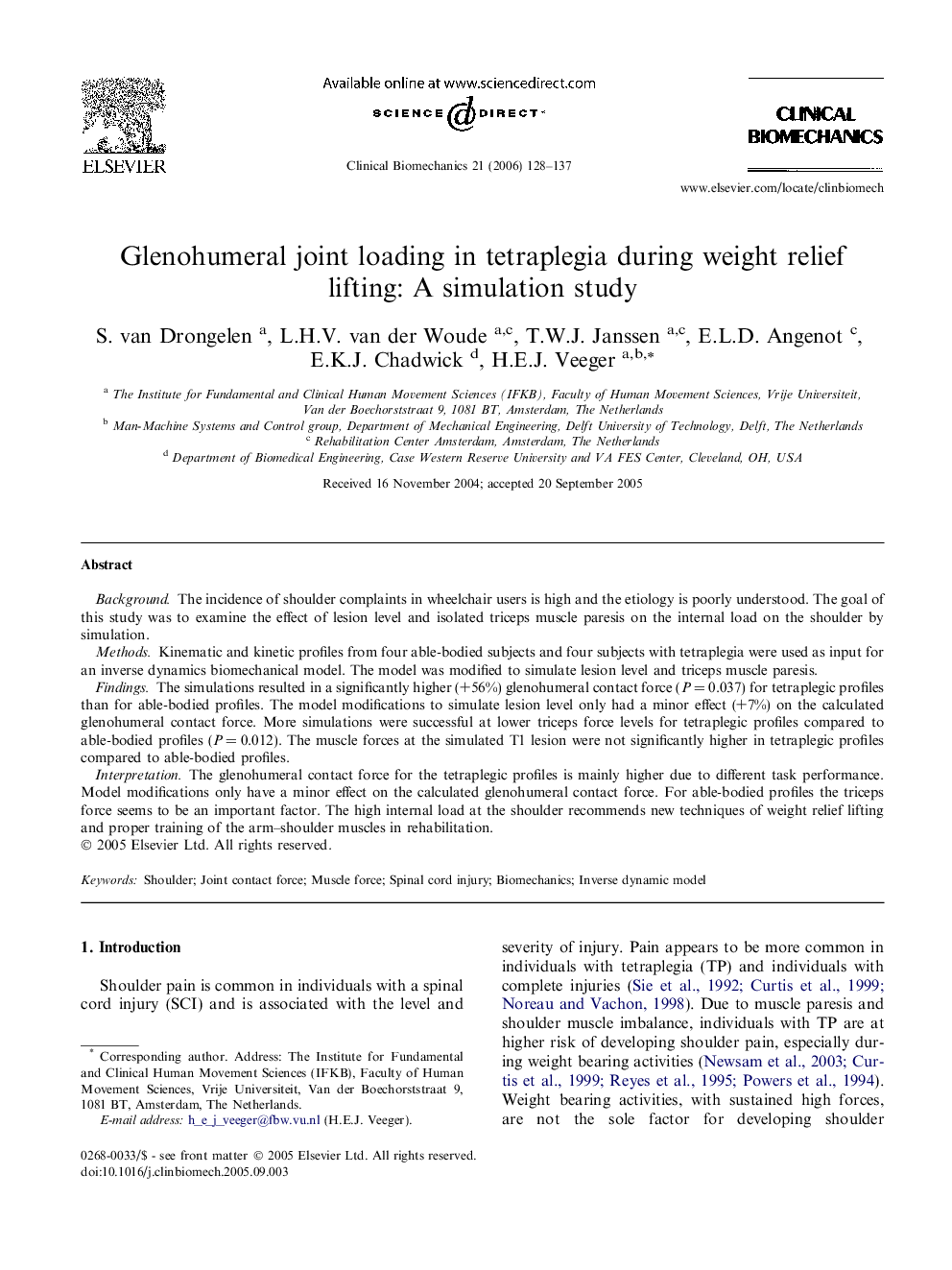| Article ID | Journal | Published Year | Pages | File Type |
|---|---|---|---|---|
| 4051772 | Clinical Biomechanics | 2006 | 10 Pages |
BackgroundThe incidence of shoulder complaints in wheelchair users is high and the etiology is poorly understood. The goal of this study was to examine the effect of lesion level and isolated triceps muscle paresis on the internal load on the shoulder by simulation.MethodsKinematic and kinetic profiles from four able-bodied subjects and four subjects with tetraplegia were used as input for an inverse dynamics biomechanical model. The model was modified to simulate lesion level and triceps muscle paresis.FindingsThe simulations resulted in a significantly higher (+56%) glenohumeral contact force (P = 0.037) for tetraplegic profiles than for able-bodied profiles. The model modifications to simulate lesion level only had a minor effect (+7%) on the calculated glenohumeral contact force. More simulations were successful at lower triceps force levels for tetraplegic profiles compared to able-bodied profiles (P = 0.012). The muscle forces at the simulated T1 lesion were not significantly higher in tetraplegic profiles compared to able-bodied profiles.InterpretationThe glenohumeral contact force for the tetraplegic profiles is mainly higher due to different task performance. Model modifications only have a minor effect on the calculated glenohumeral contact force. For able-bodied profiles the triceps force seems to be an important factor. The high internal load at the shoulder recommends new techniques of weight relief lifting and proper training of the arm–shoulder muscles in rehabilitation.
